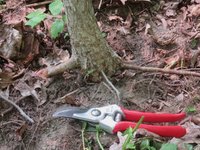Javaman4373
Shohin
I found an American Elm I think will be worth collecting on our farm. There is a very large elm on the edge of our property that I think has seeded smaller ones in the area and one looks good for collecting. It has about a 2 inch diameter trunk, nice roots, and one small branch about 10 inches from the ground. The trunk has some movement. My questions are (if the plan is to collect it next spring): 1. should some partial root cutting be done around it?; 2. should ithe trunk be chopped in June?; and 3. should it be given any fertilizer over this growing season. It is in partial shade with some large trees near by. I will get some photos for a subsequent post.


